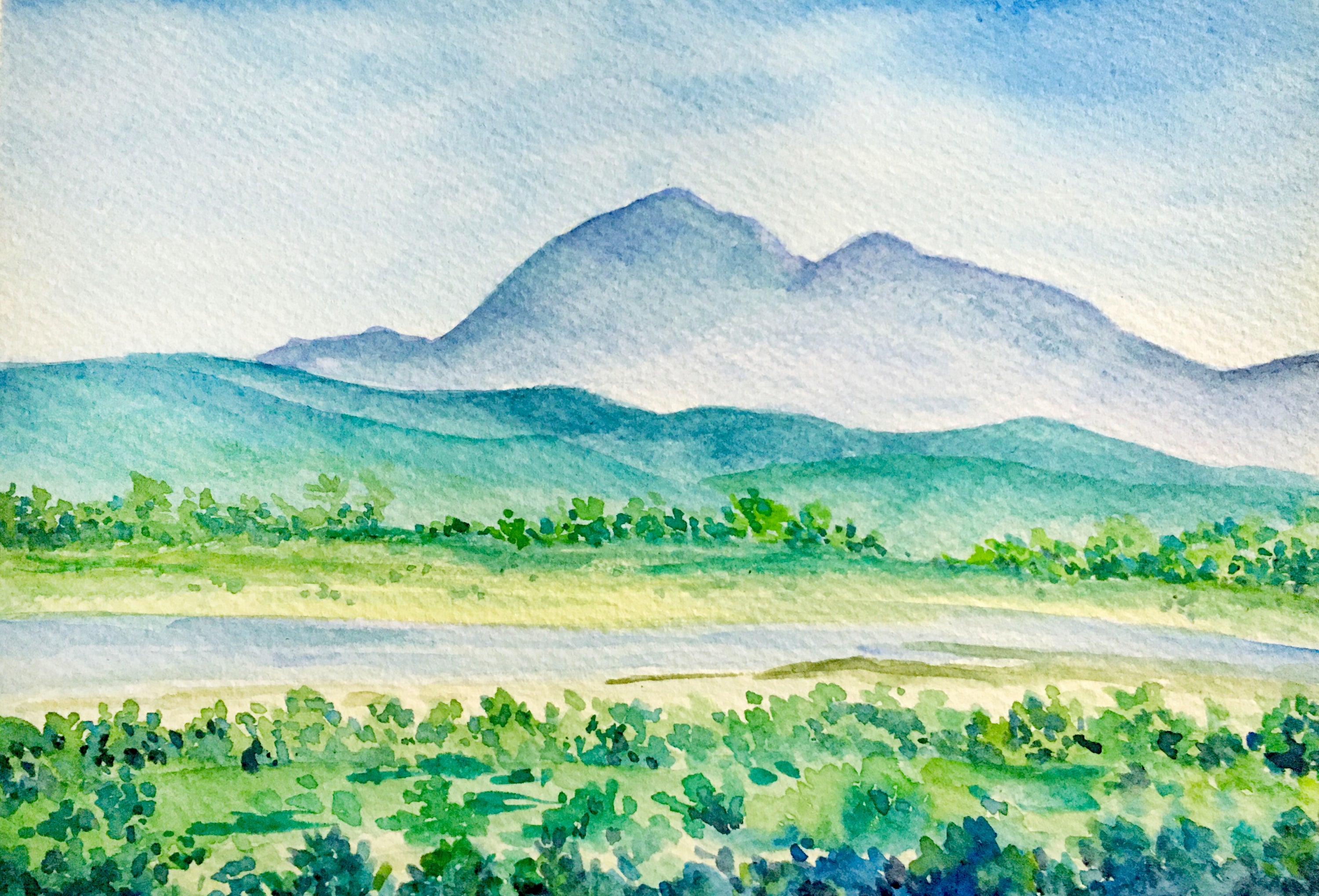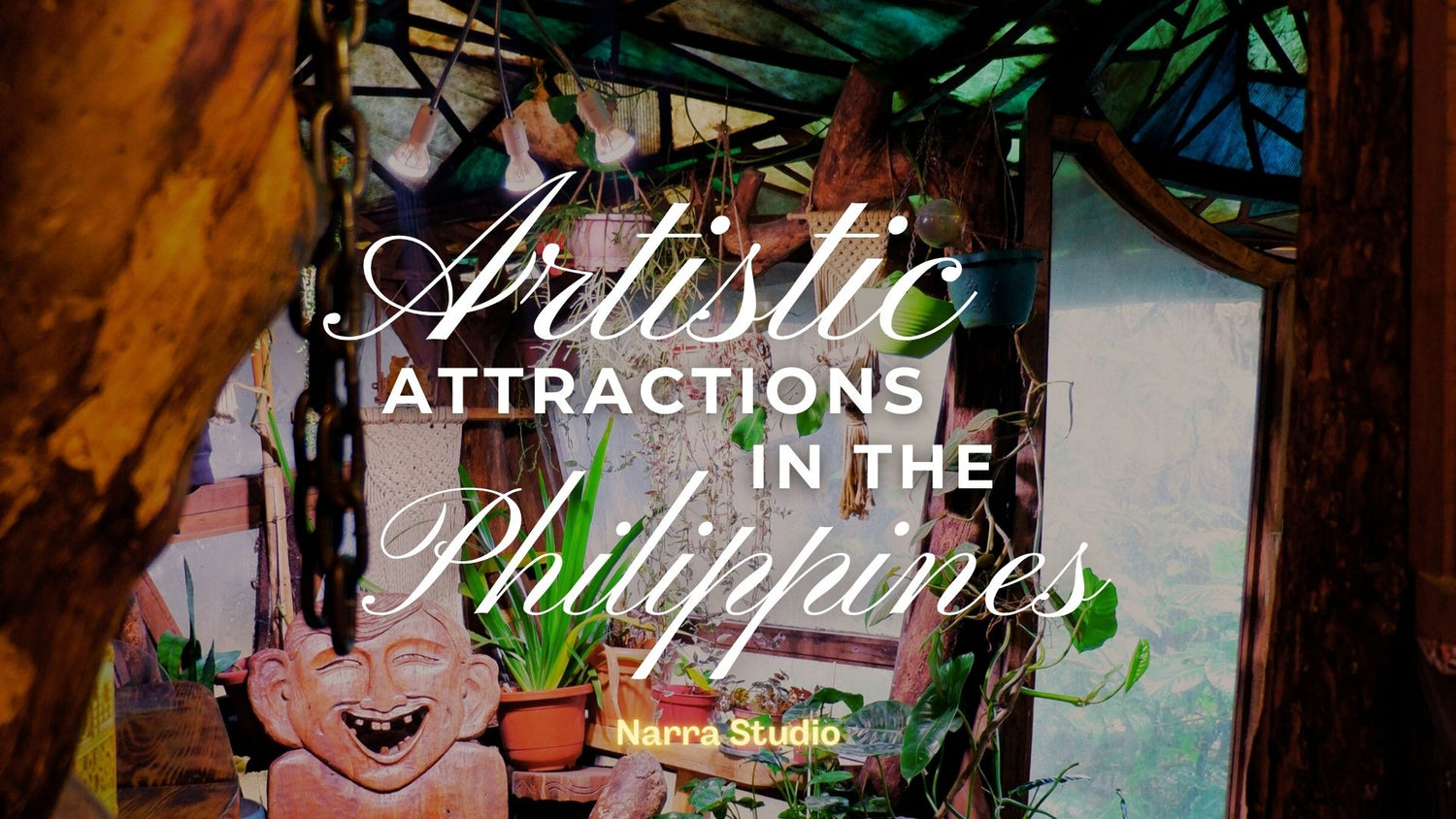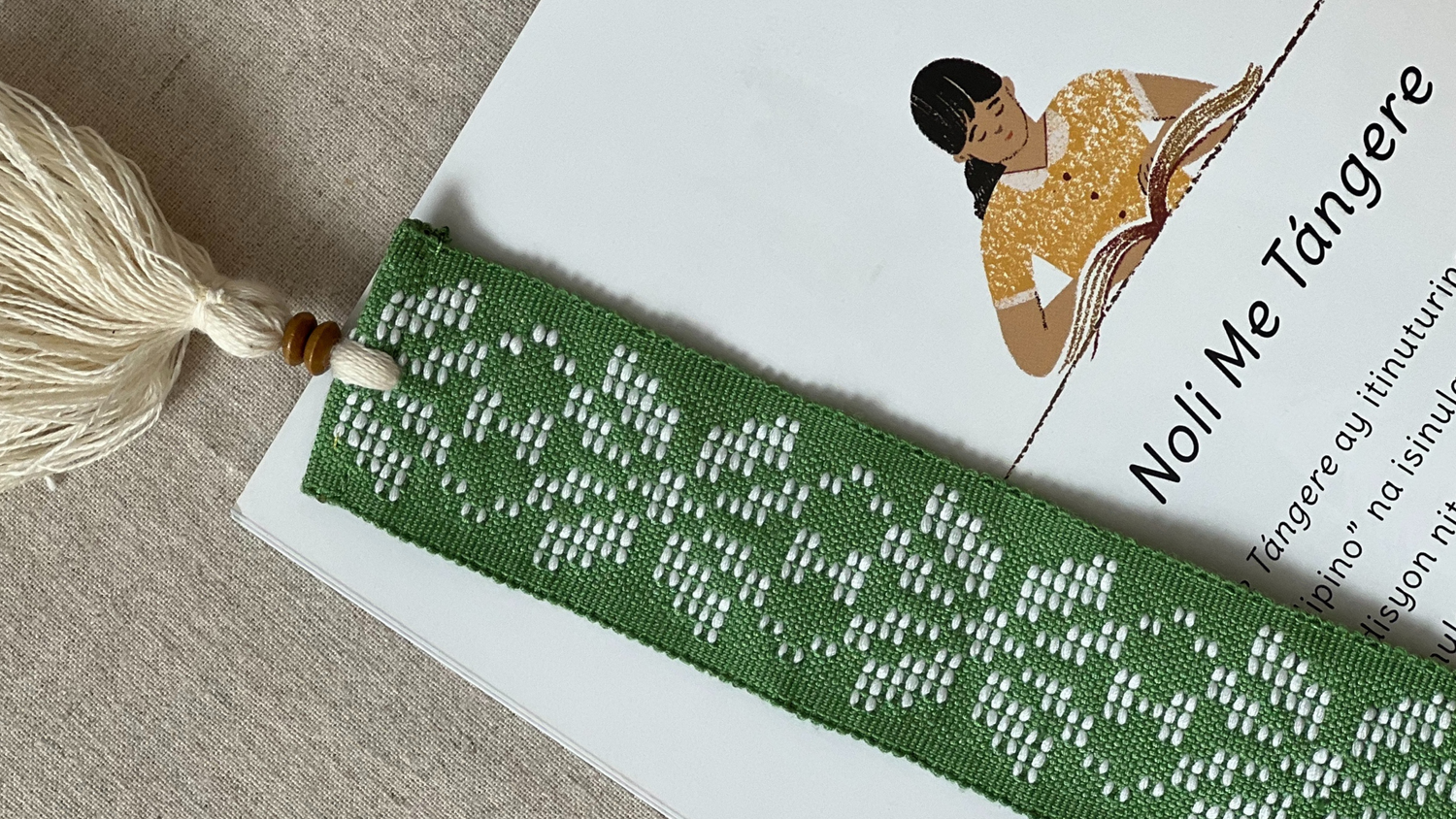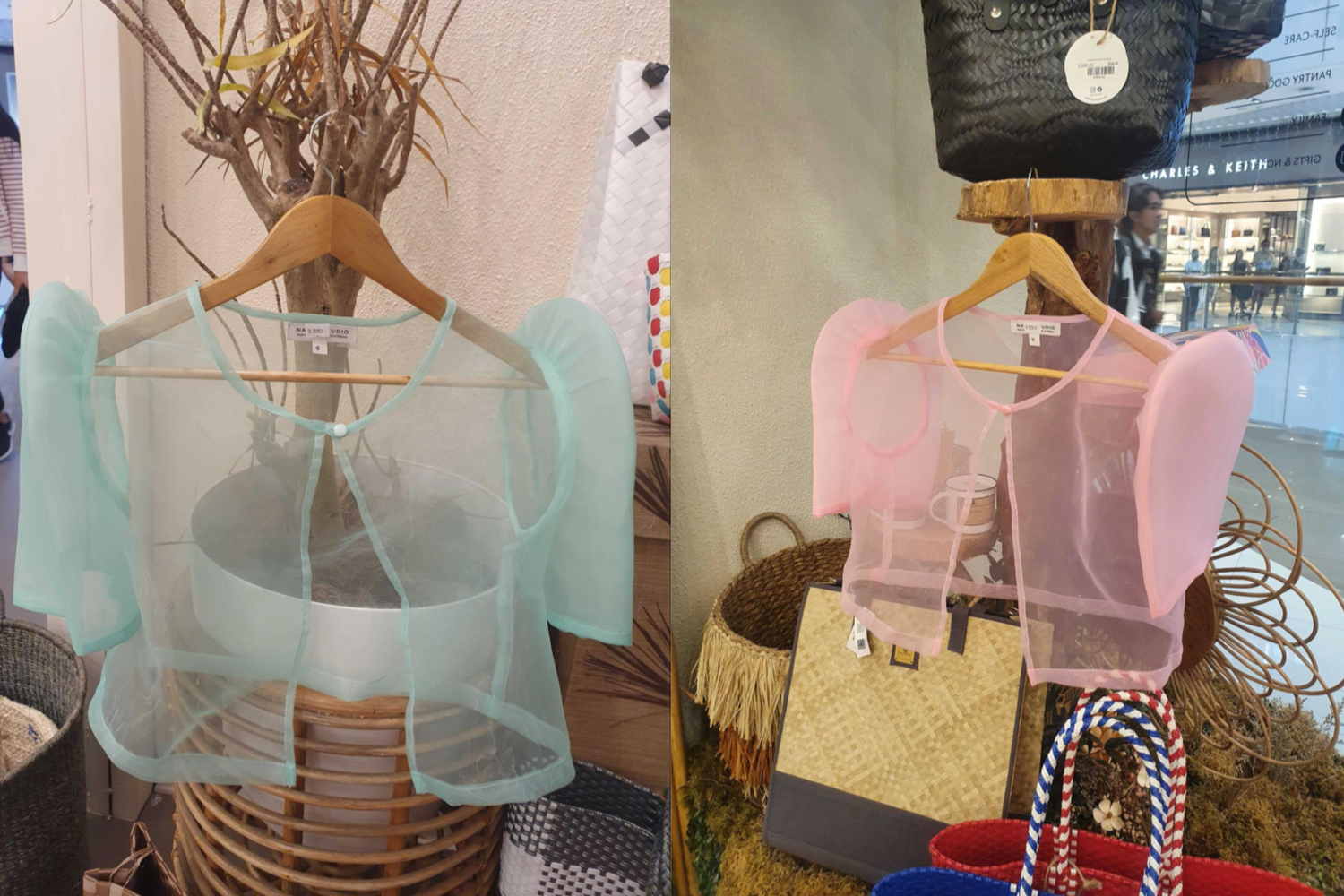Written by Lauren Villarama
Illustrations by Hope Apucay
Dyeing using plants has long been part of the process of textile production. It is a tradition in itself, with knowledge and techniques passed down through countless generations. It is amazing to think about how our early ancestors discovered and developed the process of natural dyeing and mordanting (the technique of fixing colors onto fibers and woven fabric); such knowledge can only be gained through many years of exploration, discovery and experimentation.

Sapang Plant
Through the use of natural dyes, woven textiles are given their colors. These colors reflect a culture’s identity, beliefs and may even indicate the wearer’s social status. For instance, dyestuffs that are more meticulous to acquire and extract, such as indigo, are more often used for garments worn by the upper class.
Through colored fibers, weavers are able to express their beliefs and tell their stories. These colors represent qualities such as bravery and fertility, or nature symbols such as mountains, the earth and the sky.
In the Philippines, the earliest artifacts found so far that show the use of dyeing are the pieces of textile found in Banton Island in Romblon. The pieces are referred to as the Banton cloths, and these were found inside a wooden coffin in one of the burial sites on the island. The cloths have been dated to the 14th to 15th century.
The cloths, produced from bast fibers, have a fine linen quality and show small figurative and non-figurative designs that were made using the weaving design technique called warp tie-dye resist, or ikat. The colors used on the cloths were black and red. The Banton cloths, with their striking hues of black and red, therefore attest to the use of natural pigments in Philippine textiles.
It is also known that dyestuffs, along with other materials related to textile production such as raw cotton and woven cloths, were part of the trade goods that were exchanged for silk, jars, ceramic and glass beads, silver and other items during the many centuries of maritime trade with other Asian peoples, most prominently the Chinese.
Dyestuffs like the bark of the sappan tree, from which can be extracted a rich vermillion red color, were traded along with beeswax, which is used for resist dyeing or batik. When the Spanish colonizers arrived, they collected textiles and dyestuffs from the indigenous communities and exported these to the Americas and Europe through the Manila-Acapulco galleon trade. The first indigo, locally known as tayom or tagum, arrived in Cadiz, Spain in 1784.

Indigo Plant
The extraction and application of natural dyes varies depending on the part of the plant used for obtaining dyes as well as the intensity of color desired. Lighter hues are often derived from a plant’s fruits and leaves, while darker colors are extracted from the seeds, roots and barks.
The general process of dye extraction involves chopping or grinding the plant parts and then boiling these in water. An important part of the process is mordanting, which prepares fibers to accept color, fixes the color onto the fibers, intensifies the vividness of a color and may even produce a new, more vibrant hue. Mordants used in the traditional practice of textile production include mud (which is also used for dyeing) and lime calcium, derived from grilled then crushed river shells.
The tradition of textile production using plant dyes is alive and well in the Philippines, particularly in the weaving communities of Abra, Ifugao, Aklan, Mindoro, Palawan, Zamboanga and South Cotabato, among others.
Here’s a look into some of the most common dye-yielding plants in the Philippines.
Philippine Dye Plants
ACHUETE / ANNATTO

Dye colors: yellow, orange, red-orange, red
Common names: atsuete, achuete, annatto, lipstick plant (English)
Local names: achuete (Ilocos, Zambales, Bicol, Visayas, Panay); atsuiti (Pampanga, Ilocos); achote (Pangasinan); apatut (Nueva Vizcaya); asute (Bataan); asuete (Abra); janang, chanang (Sulu); sotis (Negros)
Scientific name: Bixa orellana (Linn.)
Botanical description: A small, bushy tree, the annatto grows from 13 to 20 feet in height and a foot in diameter. The stem varies from green to red in color, while young twigs have rust-colored scales. The leaves have a heart-shaped base and a pointed tip. Mature fruits are reddish brown in color and are covered with long, soft and slender spines. When the fruits dry up, they split open in two, exposing small seeds that range in color from bright orange to yellowish red. The tree is common throughout the lowland areas of the Philippines.
Uses: The soft wood of the achuete tree is commonly used as a fire starter. The seeds, leaves and barks have medicinal uses. The bark is also considered a good source of fiber. The seeds produce bixin, the dye compound used for coloring textiles. This dye extract is also used commercially as food colorant, particularly for cheese, butter, sausages, some condiments and the sauce for pancit. It is also used in the preparation of polishes for floors and items made of leather, and is also used in the manufacture of cosmetic products such as lipsticks, nail polishes and soaps. The bark of the achuete tree is also a good source of dye.
Interesting notes: Achuete is considered the most commonly used dye plant. Aside from its use as a source of dyes, it also has several folkloric uses, such as the treatment of minor burns, wounds, snake bites and even thinning hair.
NARRA

Dye colors: brown, red, light pink, pinkish brown
Common name: narra
Local names: narra
Scientific name: Pterocarpus indicus (Willd.)
Botanical description: The narra is a large and sturdy tree that can reach a height of 100 feet and a trunk diameter of 3 feet. It has a wide-spreading crown of shiny leaves and fragrant, bright yellow flowers that can be a source of honey. The tree has disc-shaped seed pods with winged margins. The tree is known for its rapid growth and hardiness. The wood yields three kinds of red coloring agents: angolensin, santalin and narrin.
Uses: The narra is planted as a shade and ornamental tree. The narra wood is best known as furniture and cabinetry material, but its use for this purpose has been given restrictions in order to protect the species. Cutting of narra trees requires a permit from the Department of Environment and Natural Resources. Parts of the tree are traditionally used in folk medicine to cure a number of ailments. For example, the young leaves may be applied to boils and to the skin to alleviate prickly heat, while a decoction of the wood may be used to dissolve bladder stones.
Interesting notes: In 1934, the narra tree was officially declared as the National Tree of the Philippines. It is said to symbolize the strength of character and indomitable spirit of the Filipino people.
TAYUM / INDIGO
Dye color: shades of blue, violet, black
Common name: indigo, tayum
Local names: tayom, tayon, tayum, nila, malatayun, malatayum, tina-tinaan, dagum
Scientific name: Indigofera tinctoria L.
Botanical description: The indigo plant is a shrub that can grow up to 6.5 feet upon maturity. The leaves grow up to 4 inches and have leaflets that are an inch long. It has small flowers that are reddish or reddish yellow in color. The seed pods are about an inch long and contain up to 12 seeds.
Uses: The indigo plant yields the highly valued indigo dye. Aside from this, the plant has also been used in traditional medicine as a cure for a variety of illnesses. For instance, the juice from the leaves have been used as treatment for whooping cough, asthma and other lung problems. The extract in powder form has been used to relieve insect and reptile bites and stings as well as soothe scalds and burns.
Interesting notes: The smell of indigo is said to keep snakes away. Because of this, clothing dyed with indigo have a protective function, especially for farmers working in the fields. Indigo plants were part of the export goods during the period of Spanish colonization, along with cotton and abaca fiber textiles and yarn.
The traditional way of extracting the color from the indigo plant involves fermentation, which converts the naturally present glycoside, indican, into the dye indigotin. Fresh indigo leaves are gathered and boiled to extract the color, and then the leaves are removed. When the liquid solution has cooled, rice-derived bacteria are added to ferment the extract. It can take up to two days for the dye solution to ferment, after which it can be used for dyeing or turned into indigo powder or indigo paste.
TAWA-TAWA

Dye color: yellow
Common name: tawa-tawa, tangan-tangan, castor plant, castor oil plant
Local names: lansina, taka-taka, gatlawa, tangan-tangan
Scientific name: Ricinus communis Linn.
Botanical description: The tawa-tawa is a woody bush that grows to 13 feet high. It has smooth, palm-shaped leaves that can grow up to 2 feet in width. It has oval-shaped fruits covered with soft spines and may be green or purple in color.
Uses: The tawa-tawa is used chiefly as a medicinal plant and source of castor oil. The fresh leaves are used externally to soothe headaches. The seeds and root-bark have purgative properties. The bark can also be used as dressing for sores and ulcers. The castor seed oil is widely used in a number of applications, from industrial lubricants to paints and cosmetics, particularly in lip, skin and hair care products.
A yellow dye can be extracted from the leaves of the tawa-tawa.
Interesting notes: In the Philippines, there are three plants that share the name “tawa-tawa.” Aside from the dye-yielding R. communis, there’s also Euphorbia hirta (also called gatas-gatas, snake weed) and Grammatophyllum scriptum (bell or tiger orchid).
TALISAY

Dye color: yellow, gray, black
Common name: talisay, tropical almond, Indian almond, umbrella tree
Local names: banilak, dalasa, dalinsi, logo
Scientific name: Terminalia catappa L.
Botanical description: The talisay is a large tropical tree that can reach a height of 80 feet. It has shiny obovate leaves that are about 4 to 10 inches long. The leaves have a rounded apec and a narrow base. The tree has white flowers and smooth, bi-ridged fruits about 2 inches long.
Uses: The talisay is considered a shade tree, but it has several uses. The wood is used for building boats and houses. The kernels of the talisay fruit are edible, and the seeds are rich in potassium, sodium, magnesium and calcium. The different parts of the tree have shown healing properties as well. In folk medicine, the leaves are applied to rheumatic joints while the bark is used to treat gastric ailments and dysentery.
Interesting notes: The green fruits, leaves and roots of the talisay may be used for tanning leather. The leaves are rich in tannin and are a natural source of yellow, gray and black dyes.
RHOEO DISCOLOR

Dye color: green
Common name: bangka-bangkaan, Moses-in-the-cradle, oyster plant, boat lily (English)
Local names: penpen (Abra), aksibal, bangka-bangkaan
Scientific name: Tradescantia spathacea Sw.
Botanical description: Rhoeo discolor is a small, fleshy plant with a thick stem. The leaves are narrow and shaped like the head of a lance and taper to a point. The leaves grow up to 2 feet in length and 2.5 inches wide. The upper surface of the leaves are dark green in color, while the reverse side is purple. It has small white flowers.
Uses: The bangka-bangkaan or rhoeo discolor is commonly used as an ornamental plant and ground cover, but it also has medicinal uses. In the Philippines, the indigenous Ayta communities in the municipality of Porac in Pampanga have used aksibal (the local term for the plant) to treat fractures, sprains and inflammation. The plant is also known to have expectorant and decongestant properties. The weaving communities in Abra use the plant as a source of green dye.
Interesting notes: The origin of the plant’s common English name, Moses-in-the-cradle, is derived from how the small white flowers arise from inside the cradle-shaped bracts--it’s the biblical Moses nestled in the boat! “Bangka” is also the Filipino word for boat.
MAHOGANY

Dye color: reddish brown
Common name: mahogany, Bolivian mahogany, big leaf mahogany, Honduras mahogany
Local names: mahogany
Scientific name: Swietenia macrophylla
Botanical description: The mahogany is a tall tree that can grow up to 200 feet. It has a large, round and open crown. The trunk can be up to 4 feet in diameter. The tree has compound leaves and small clustered flowers that are white or green and color. The mahogany fruit is a brown capsule with big winged seeds.
Uses: The S. macrophylla tree is not native to the Philippines but it has nonetheless been used for reforestation and as a shade tree. The wood, prized for its color and durability, is used for making high-value furniture, musical instruments, doors and other cabinet and construction work.
A reddish brown dye can be extracted from its bark. The gum extract can also be used for leather tanning.
Interesting notes: The mahogany tree was introduced to the Philippines in 1907 as park trees in Manila. Six years later, the Los Baños campus of the University of the Philippines received more than a thousand mahogany seeds from India. In the 1960s, tree planters in Mindanao imported mahogany seeds from Central America. Plantations have also been established to provide timber for the domestic furniture industry. Mahogany trees have now been planted in numerous reforestation areas, though the species is considered invasive. Environmentalists believe the mahogany tree does more harm than good for Philippine biodiversity.
GABI
Dye color: yellow green
Common name: gabi, taro
Local names: aba, abi, abalong, natong, gabi
Scientific name: Colocasia esculenta Linn.
Botanical description: A herbaceous plant with long stalks and large leaves, the gabi or taro plant can grow up to 5 feet. Its fleshy brown-purplish rootstock can grow to 4 inches in diameter. The leaves, with a dark green color on the upper surface and a lighter green color underneath, are grouped into two or three and have a triangular or heart shape. The gabi leaf has a water-repelling property because of numerous tiny waxy spikes on its surface. When raindrops fall on the leaf, these simply bead up and slide off.
The gabi is primarily grown for its edible, starchy corms and nutrient-rich leaves. It grows easily in moist or swampy soil.
Uses: The gabi is one of the most common root vegetables in the Philippines, with its corms, leaves and stems included in several dishes such as sinigang (a sour stew made with shrimp, fish, pork or beef), laing (made with taro leaves and coconut milk) and the snack or dessert called ginataan (made with coconut milk, tapioca pearls and glutinous rice shaped into balls).
The leaves are a source of yellow-green dye.
Interesting notes: Scientists from the Philippine Textile Research Institute have taken inspiration from the gabi plant’s water-repelling quality by developing textile-coating technology that makes fabrics water-repellent.

Shop Plant-Dyed Banigs
The tradition of natural dyeing goes on thanks to the culture-bearers in the different communities, supported by government and institutions and nonprofit organizations, such as the Philippine Textile Research Institute and the Non-Timber Forest Products-Exchange Programme. NARRA Studio is honored and proud to be working with weavers in the Philippines to promote the traditions of handweaving and natural dyeing. Read more about the dyeing process here and explore plant-dyed clothing from Abra.
We are very grateful to Sir Luis Agaid, Jr., head of the Namarabar Indigo Natural Dye Producers Cooperative (NINDPC), with his wife Nida, for sharing their knowledge of Philippine plants, plant dyes, and pigments, especially those grown and harvested in Abra.
Some of the current research initiatives, projects, programs and advocacies that support and promote traditional textile production and natural dyeing include the following:
- Namarabar Indigo Natural Dye Producers Cooperative, Abra
- Non-Timber Forest Products-Exchange Programme (NTFP-EP Phils.)
- Department of Science and Technology - Philippine Textile Research Institute (DOST-PTRI Natural Dyes Program)
- HABI The Philippine Textile Council
- Philippine Fiber Industry Development Authority
- Ifugao Heritage Center
- Kiangan Weavers Association
- Department of Environment and Natural Resources - Ecosystems Research and Development Bureau (DENR-ERDB)
- National Commission for Culture and the Arts - Schools of Living Traditions
- Food and Agriculture Organization of the United Nations (FAO)
---
Sources:
BOOKS
Respicio, N. 2014. Journey of a Thousand Shuttles; The Philippine Weaver. Manila: NCCA.
Scott, W. H. 1994. Barangay: Sixteenth-century Philippine culture and society. Quezon City, Manila, Philippines: Ateneo de Manila University Press.
Census of the Philippine Islands: Taken Under the Direction of the Philippine Commission in the Year 1903, Vol.1 (accessed online)
WEBSITES & WEB PAGES
Philippine Textile Research Institute http://ptri.dost.gov.ph/
Compilation of Philippine Medicinal Plants by Godofredo U. Stuart Jr., M.D. - http://stuartxchange.org/
Asian Textile Studies by David and Sue Richardson - http://www.asiantextilestudies.com/
Research Information Series on Ecosystems, Vol. 11 No. 1 (January-April 1999), “Natural Dyes” -Compiled by Helen B. Florido and Fe F. Cortiguerra
Department of Environment and Natural Resources - Ecosystems Research and Development Bureau
The Colours of Asia: Philippines. 2013 Research Report
One Weave, One Dream - Erin Canoy
Bluer than blue: the revival of Philippine indigo
Namarabar: The community reviving natural dyes in the Philippines
Using mahogany in our reforestation programs may be ecological suicide
Country report on forest invasive species in the Philippines





